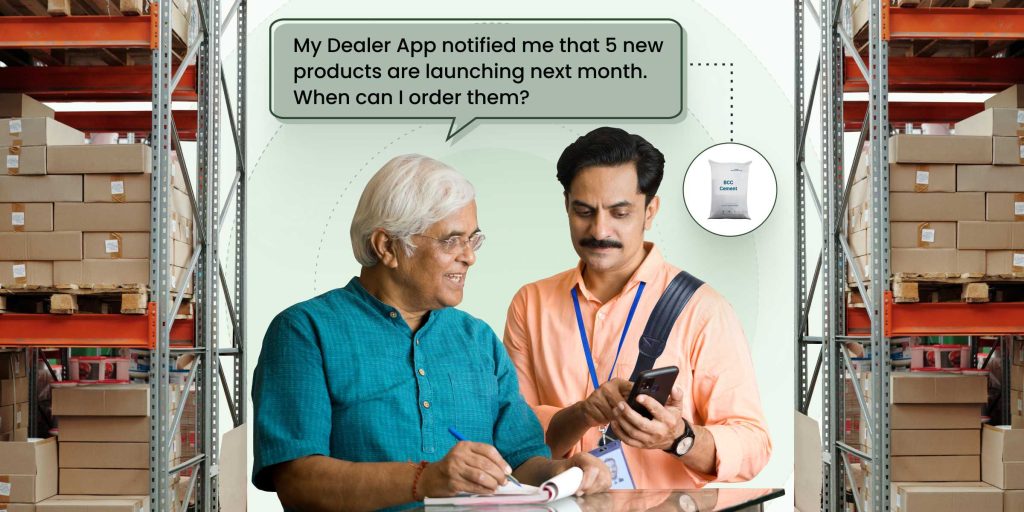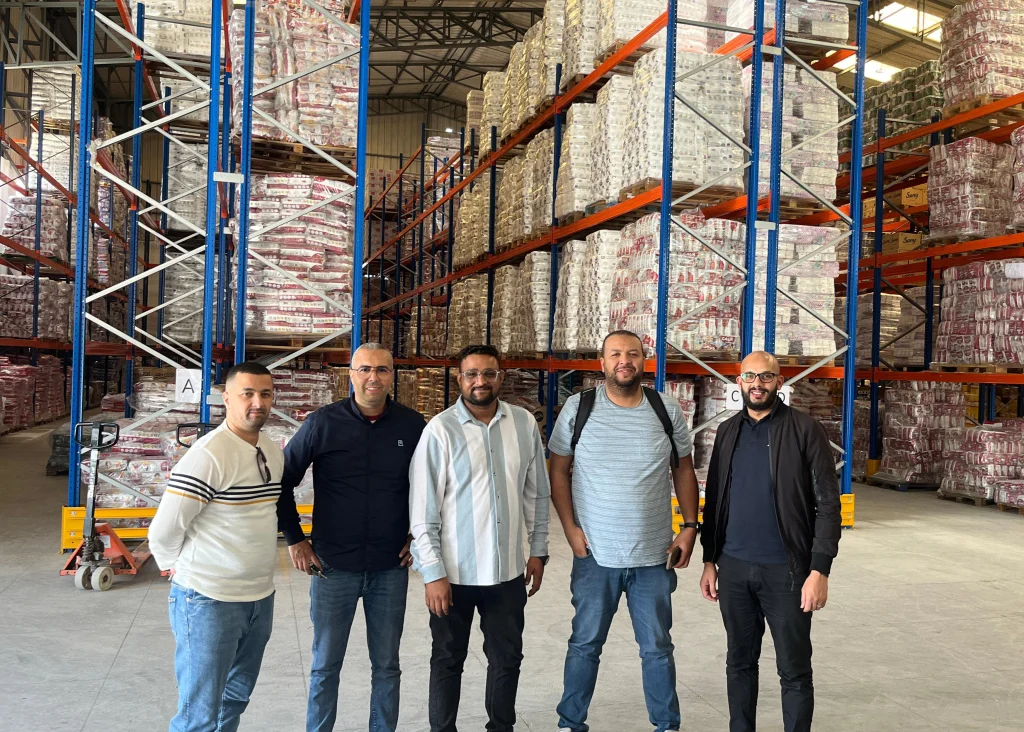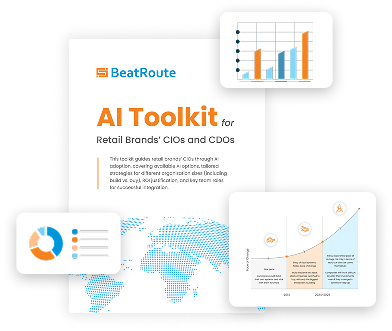Why Brand-Dealer Engagement Must Mix Traditional and Digital Practices

A brand is not an independent entity when it comes to getting its products out in the market; it is dependent on external enterprises such as dealers to reach consumers. Without dealers at the forefront of consumerism (for certain product types), brands would find it extremely challenging to ensure product visibility or adequate sales. Dealers are responsible for putting up the brand’s products on their shelves after the said product is manufactured, tested, and cleared for sale by the brand. They are what you would call a bridge between brands and consumers with the express focus on sales.
Something that sets dealerships apart from FMCG retail stores is that sales visits at dealerships are not about placing orders; it is about building and maintaining the relationship between the brand and the dealers. It involves educating the dealer and their team about the brand, their products, schemes, so that they can take a decision and place the order at their convenience.
Although this tradition is a tried and tested concept, it’s not without its problems.
Problems that can potentially harm a brand if not addressed and overcome in time. We discuss this in the next section.
The Pitfalls of Tradition
In traditional engagement, a brand’s sales representative visits the dealership to maintain their relationship by educating the dealer on what the brand is offering, introducing new products, and receiving and recording feedback.
This in-person interaction is a fundamental tenet of brand-dealer relationship without which, the brand may not be able to ensure good business. Granted, this is just one factor in a number of backend elements that form the façade of a successful enterprise, but nevertheless, it is a crucial one.
Despite this, exclusively traditional interaction between brand and dealer may have a number of drawbacks, which we discuss below.
- Sales representatives are human beings and as such, have different skill levels. While some may be good negotiators or conversationalists, others may simply miss the mark when visiting dealerships. Failing to educate dealers about a product or brand, failing to document feedback properly, and pushing the brand agenda inadequately constitute failed visits.
- Time is also a factor. A particular dealership is just one of many scheduled visits for the day on a sales representative’s list. As such, the representative has a limited window to make an impact and document feedback, which can be a concern.
- Another issue is that the number of promotions for products might be too many for a sales representative to commit to memory and may lead to missed opportunities and lost revenue for the brand. Even if the sales representative successfully passes on the right scheme information, the dealer, in turn, may forget about the promotions and schemes while placing the order.
- The dealer, unlike the retailer at a general store, doesn’t always place an order with the sales representative but instead does so later via email, phone call or WhatsApp messaging. These are both cumbersome and dated when considering the sheer range of products offered by brands today, leaving little room for customised recommendations or communication.
The Fallout to Avoid
The result of the above issues is that brands are unable to properly push their offerings to dealers. They might have an excellent product but no way to promote it to the right dealers because their sales representatives are incompetent or limited. This can lead to dealers being ignorant about a product or having a skewed idea about it, which can be misleading for consumers.
It isn’t just important but downright critical for brands to not just build a product but to be able to educate dealers about every aspect of it to stay ahead in the game.
In this respect, there is also a danger of a dealership switching loyalties or becoming biased towards a competitor’s product if the competitor in question does a better job at forming a meaningful relationship with them. This comprises regular interactions, product education, communicating schemes in real time, fast resolutions, transparency, and more!
Without a familiarity of that level between a brand and a dealer, all the trade promotions in the world wouldn’t mean anything. As a brand, you could have everything in place, but if nobody sees or speaks about your product, it’s all for naught.
The Solution – Connect the Past with The Future

Although digitalization and digitization may appear to be the only hallmarks of successful modern businesses, going full-on digital is never the answer. Instead, an amalgamation of physical interactions and digital augmentation is key to keeping pace with the future.
In developing regions such as India, South East Asia, the Middle East or Africa, dealers are of a more traditional mindset than first-world nations where software adoption and mobility are a norm. There is nothing wrong with that as face-to-face interactions are a critical piece to the puzzle of running a business. The need of the hour is, therefore, not to replace tradition but to bolster it with technology and digital interactions.
A well-designed dealer app can make life easier for everyone involved. It can ensure the following:
- Allow the dealer to place orders himself rather than doing so through phone calls, messaging or emails. The information, order history, credit/debit notes (if applicable), promotions, prices, etc. are all visible in a structured and easy-to-read format in one place.
- Loyalty programs are easier to run and track when available in a seamless application than through offline avenues. When brands offer special discounts and/or reward points to dealers for good business, it provides significant incentive to dealers to do even better in the future.
- Dealers can get visibility on promotions, even the newest ones, sometimes in the form of nudges from the brand. A pop-up explaining a special offer will go a longer way in getting a product sold than when a dealer has to memorise everything.
- Brands can automatically forward leads to dealers who can then try and convert them into actual consumers. This saves time compared to contacting dealers on a phone call or passing down the leads in person.
- Digital transactions via a progressive web app or a mobile application is a much faster and more efficient process than otherwise. With security protocols in place, this incredibly helps with order fulfilment and payments.
- Brands can use multimedia content to educate dealers on a new SKU or a new product altogether. This helps dealers promote and talk about products more convincingly and boost sales for the said product.
How BeatRoute Factors into This
BeatRoute is a sales enablement platform that’s razor focused on helping brands achieve their sales goals. Every design, feature, and module was created to help brands achieve maximum efficiency in their Route-to-Market. It positively affects dealer-brand interaction, leading to more efficiency in executing processes from order placement to order delivery to sales.
Brands can use BeatRoute to enable their sales teams as well as dealers. For this article, we’ll only cover BeatRoute’s Dealer App.
Dealers can access our Dealer App via WhatsApp or other social media channels. This greatly reduces adoption issues since they don’t have to install or login to any additional app. Our WhatsApp, Viber and Facebook Messenger chatbots allow dealers to engage with the brand on the social media channels that they use and prefer. The dealers can initiate the interaction with a “Hi” to the bot, or the brands can initiate the same with proactive messages or notifications to the dealers.
The Dealer App workflows include:
- Order placement with recommended order basket
- Our Scheme Engine for upsell and cross-sell
- Our B2B Reward program to foster loyalty towards the brand and push a broader range of products
- Account Statements with credit limit, unused credit, debit notes, credit notes and payments
- Returns management
- Dealer Education on new product launches, offers, promotions, product usage guides and other sales agendas of the brand
As mentioned already, the dealer can place orders themselves and can benefit from the available upselling and cross-selling schemes visible on the app. The schemes apply automatically as soon as the order basket (cart) fulfils the criteria for each scheme. Our comprehensive scheme engine ensures that dealers know of every scheme available and that brands are able to push new or low-selling products into the market.
Dealers can edit previous orders, repeat them, and track order history and order dispatch until fulfilment.
Using the B2B Reward program, brands can build stronger relationships with dealers and nudge them to buy a broader range of products. Dealers collect points by purchasing products; accumulated points can be viewed and redeemed with a few clicks for items in a globally available gifts catalog. The entire process from reward points generation to redemption to reward delivery is handled by BeatRoute’s platform.
What It Amounts To…
Business transactions from the days of barter to the 21st century have always had people in the middle of it. Neither can a brand flourish and build relationships with vendors or dealers with technology alone nor can it stay ahead of the curve by shunning progress. Regardless, the combination of human intervention and digital interaction is a mandate for brands and dealers to form a successful, long-term business relationship.
At this point in this article, it is clear that dealers and brands would both hugely benefit from digital engagement with each other. You may find that at first glance, digitalization is all about smart devices and cutting-edge ecommerce systems but factually, it is fast becoming a critical factor for strategizing at every level of the supply chain across industries. When man and technology work in tandem, it opens new avenues to success.
Companies that follow this practice will be better off into the future than companies that don’t; leveraging digitalisation and combining it with traditional human interaction is the next step into the future of brand-dealer dynamic.
Ultimately, it is prudent to remember the endgame of all commerce – sales. And to reach that endgame, all brands and dealers have to be on equal footing with the rest of the world or be left behind.
Interested? Book a demo today and learn more about our dealer app!
About the Author
-
Apart from being a Senior Content Writer at BeatRoute, Soham is an avid reader of science fiction and suspense novels (Doyle, Christie, Brown or anybody great!) He also dabbles in historical narratives and wonders about our place in the universe. Cosmic viewpoints, Carl Sagan, and Neil deGrasse Tyson intrigues him. When not reading, you may find him spending his weekends or after-work hours watching a fulfilling movie with his family.
Use Goal-Driven AI to Achieve Retail Sales Uplift, Today!
Join enterprises in 20+ countries that trust BeatRoute, the globally dominant AI platform for sales force automation, field sales, DMS, and eB2B
Latest Insights & Articles
Here are the most impactful articles, platform updates, ebooks and reports for you.



